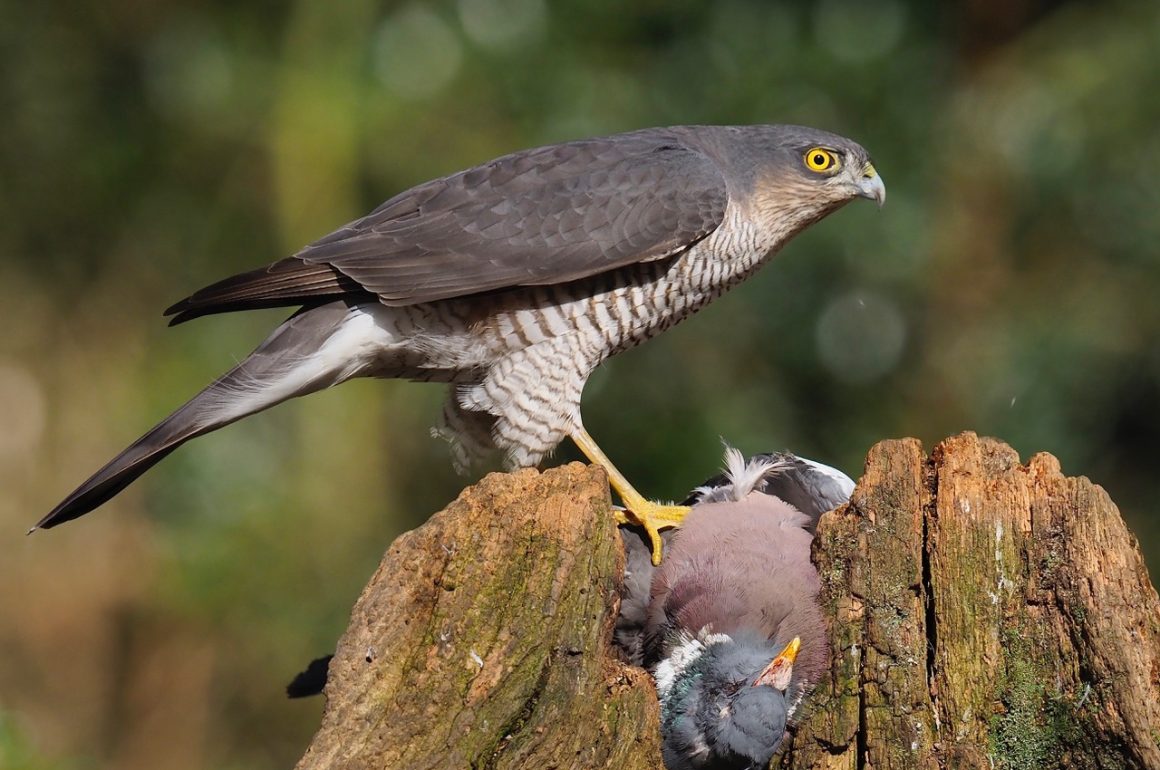
Not many people have a good word to say about the Sparrowhawk, the feathered assassin in the garden. (Note for American readers: the Sparrowhawk is the Old World equivalent of the Sharp-shinned Hawk, and is similar in both size and appearance). These small hawks are spectacular killers, making flying raids on bird tables and carrying off anything from Blue Tits to Collared Doves. A big female Sparrowhawk may even tackle a Woodpigeon. Females are noticeably bigger and heavier than the males: he usually weighs around 150gm, the female twice as much. Though they are easily identified, many people confuse them with the similarly sized Kestrel. Sparrowhawks have relatively short, rounded wings and a long tail, making them supremely manoeuvrable – able to dodge through trees or shrubs, catching their prey by extending their long yellow legs. In normal flight they travel with a few quick wing beats, followed by a short glide. In contrast, Kestrels have pointed wings, generally hunting their prey (which is mostly small mammals) from a perch on when hovering. Sparrowhawks never hover.
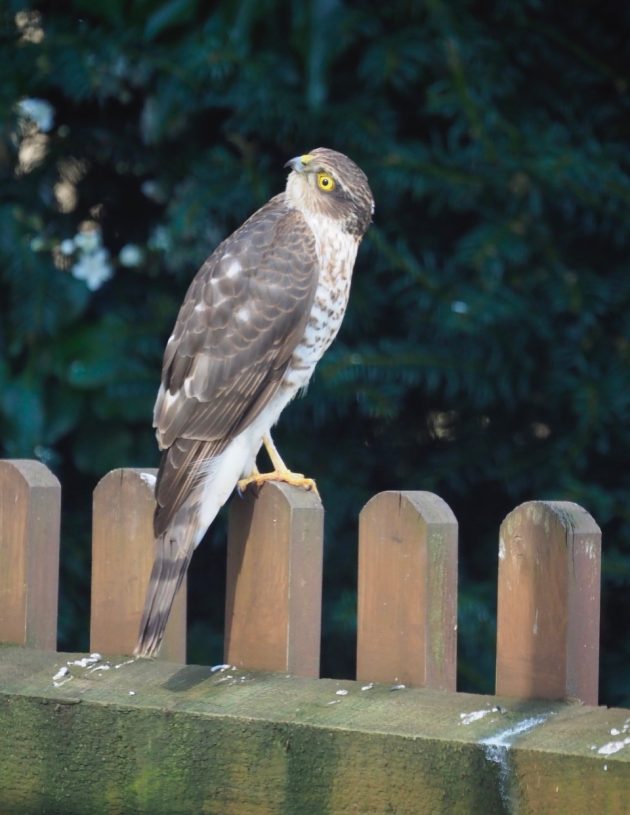
They depend almost entirely on birds for their food, and will take almost any species available in their locality. Because of the considerable difference in size and weight, the sexes take different prey, so do not really compete with each other. A male usually takes prey up to 40gm, occasionally up to 120gm. The more powerful female regularly kills birds weighing up to 150gm, sometimes as much as 500gm. Mating is a tricky business for the male, as the much larger female is quite capable of killing him.

A female Sparrowhawk with her prey, a Collared Dove
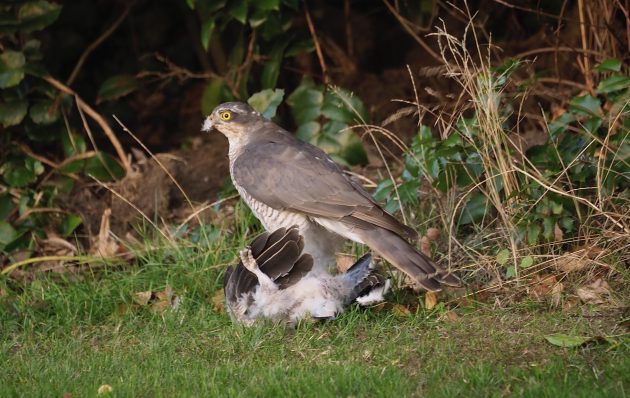
This female has killed a juvenile Woodpigeon
Many people understandably become upset when they see Sparrowhawks killing birds, but the hawks have been doing so for hundreds of thousands of years, and it’s a natural way to keep small-bird populations healthy. They will usually take the slowest or least wary individual, perhaps one that is diseased or injured. Such predation ensures survival of the fittest, and by removing unhealthy birds from a population the hawk is restricting the spread of disease.
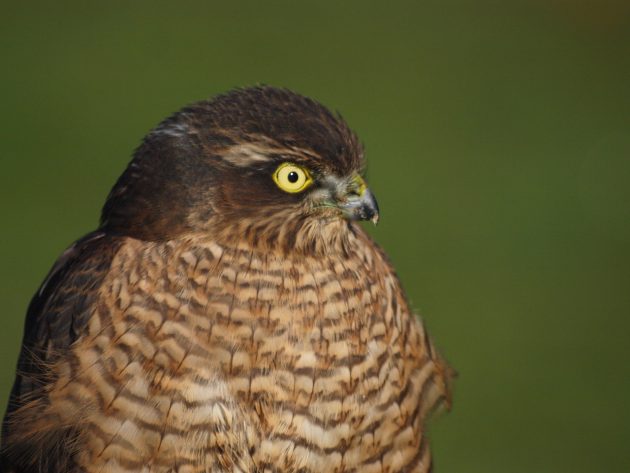
Portrait of a young male Sparrowhawk
Sparrows are certainly a staple diet of the Sparrowhawk, or at least they were until the House Sparrow’s decline in the UK. If House Sparrows are the most numerous birds in a male Sparrowhawk’s territory, then he will probably kill more sparrows than any other species, and studies have found that they can make up as much as 28% of the diet, followed by thrushes,Chaffinches and tits. Collared doves weigh around 175gm, so are usually taken by female Sparrowhawks who will also kill Woodpigeons, though generally nestlings or young birds that have recently fledged.
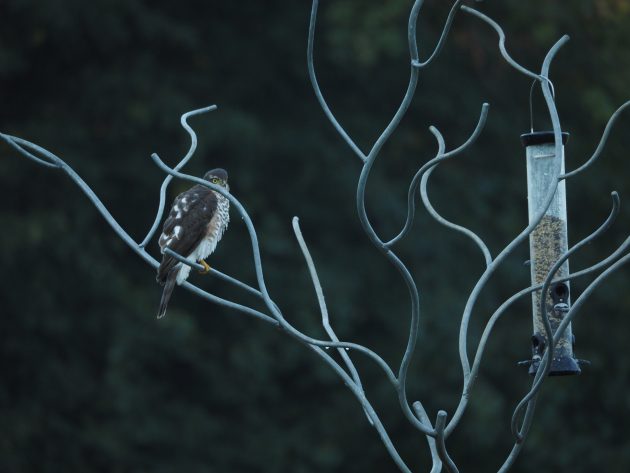
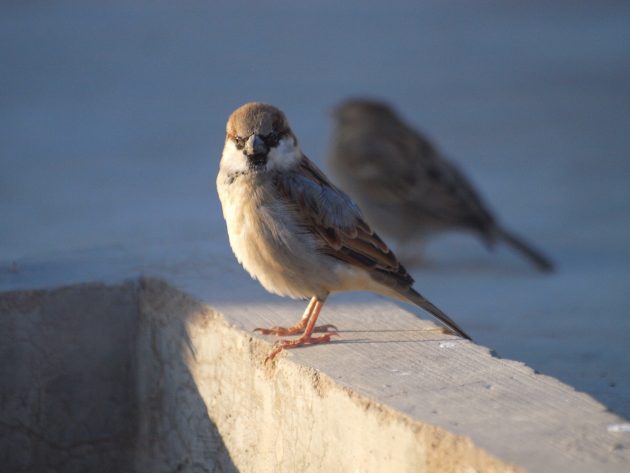
House Sparrows are an important part of the Sparrowhawk’s diet, hence the name
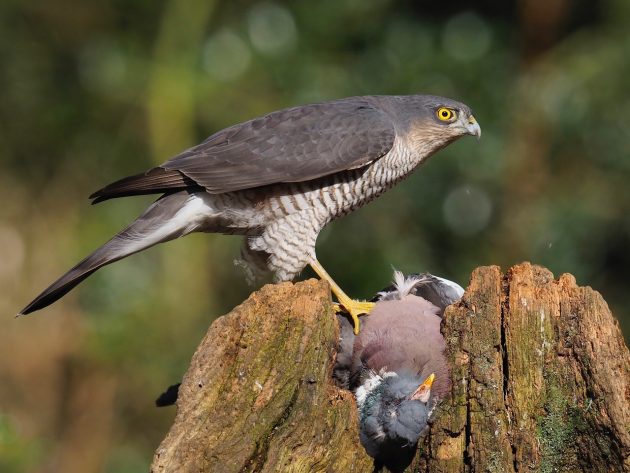
Female Sparrowhawk with a Woodpigeon. Only the larger and heavier female is capable of killing prey as big as a Woodpigeon
Adult Sparrowhawks may be efficient hunters, but young birds often struggle to acquire the skills needed for survival, so many die from starvation. Considerable numbers are killed as a result of collisions with wires, windows and other obstacles – high-speed flying is not without its dangers. The life of a Sparrowhawk isn’t easy.
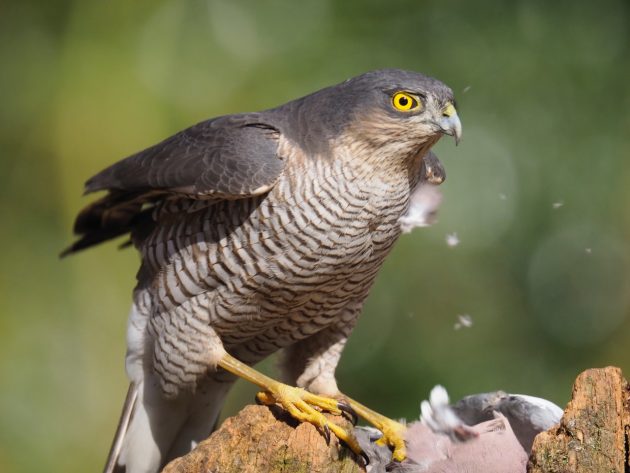
Figures from the British Trust for Ornithology show that the Sparrowhawk is currently declining, probably reflecting a general overall fall in the numbers of small birds in our countryside, for the abundance of prey controls the number of predators. However, it remains a common and widespread bird, found the length and breadth of the British Isles. This hasn’t always been the case. In the late 1950s and 1960s the population was decimated by organochlorine pesticides such as DDT, which were then widely used for seed dressing. Being at the end of the food chain, the hawks accumulated lethal amounts of the pesticides from their prey, either killing them outright, or rendering them infertile. It’s a bird I encounter on an almost daily basis, and one that I enjoy seeing, though I’d rather they didn’t kill the Blue Tits in my garden.
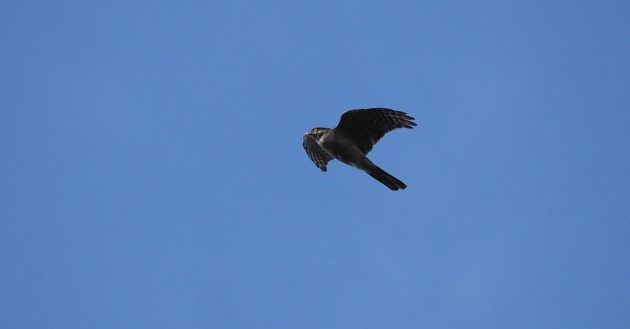



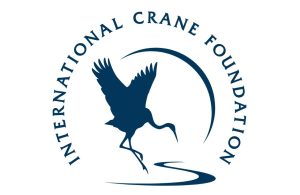
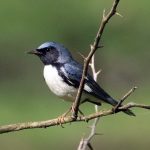
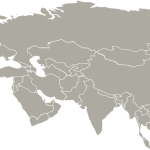
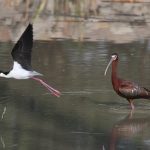

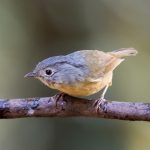

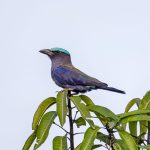
Leave a Comment